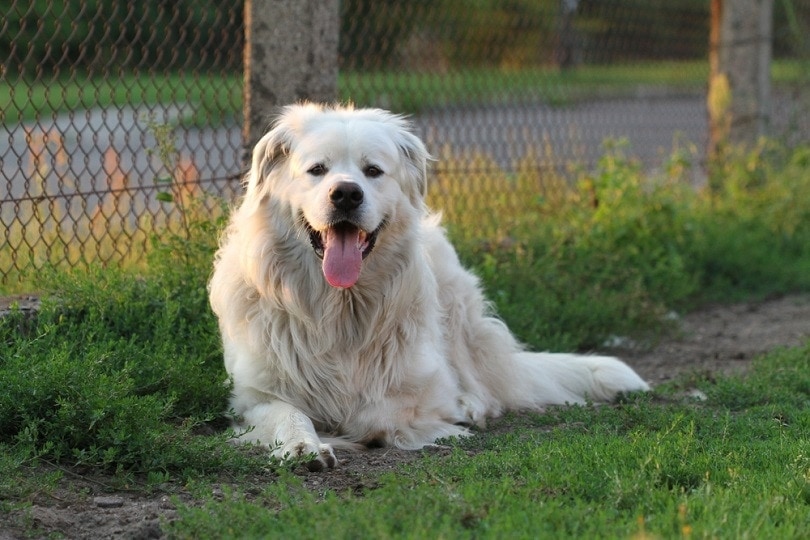How to Take a Dog Kayaking and Canoeing — 7 Simple Steps
By Grant Piper
Updated on
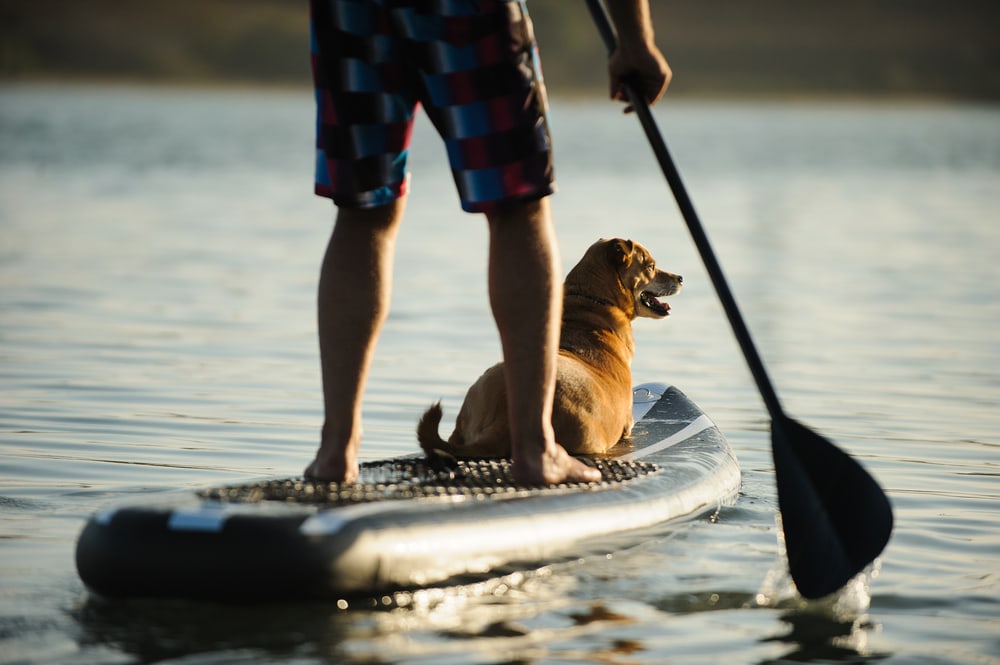
Being out on the water is a great way to spend the day. Many people love kayaking and canoeing. But can you bring your dog along with you when you are out on the water? The answer to that is yes! Many dogs love to accompany their owners when they go kayaking and canoeing. But you can’t just grab your kayak and your dog and hit the water. There are a number of considerations that need to be addressed, including training, safety, gear, and practice.
Here is everything you need to know about taking a dog kayaking or canoeing.
The 7 Steps to Take Your Dog Kayaking and Canoeing
1. Teach Basic Commands
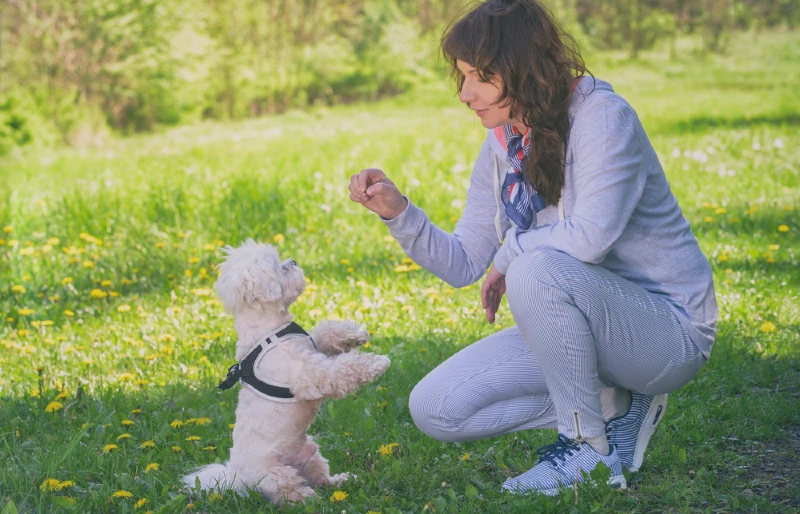
One of the most important things to master before taking your dog out on the water is a series of basic commands. You need to make sure your dog can come (recall), stay, stop, and leave it. These commands are critical. The last thing you want is for your dog to jump out of the boat, swim off, and not come back. Several things can cause a dog to leave the boat, including wildlife, other dogs, or anxiety. Making sure that your dog can come back and will listen in potentially dangerous situations is vitally important for their safety.
You also want to make sure your dog can stay in one position while you are on the water. This position will depend on your boat and your dog. Dogs should be able to remain stationary, especially when you are paddling. It can be very difficult to navigate if your dog is constantly moving around in the boat. You can even accidentally whack your dog with your paddle if you are not careful if they are not in a single safe location. It is a good idea to use treats to get your dog to stay in one spot while on the water.
2. Invest in a Personal Floatation Device (PFD)
Even though most dogs can swim, it is important to invest in a personal floatation device, also known as a lifejacket. Making sure that your dog can stay above water is very important for safety. Do not skimp out on buying a PFD for your dog. Lifejackets will both help your dog swim and can also make your dog more visible in the water. It might be a good idea to get a brightly colored lifejacket to help spot your dog if they are off swimming.
3. Get a Suitable Kayak or Canoe
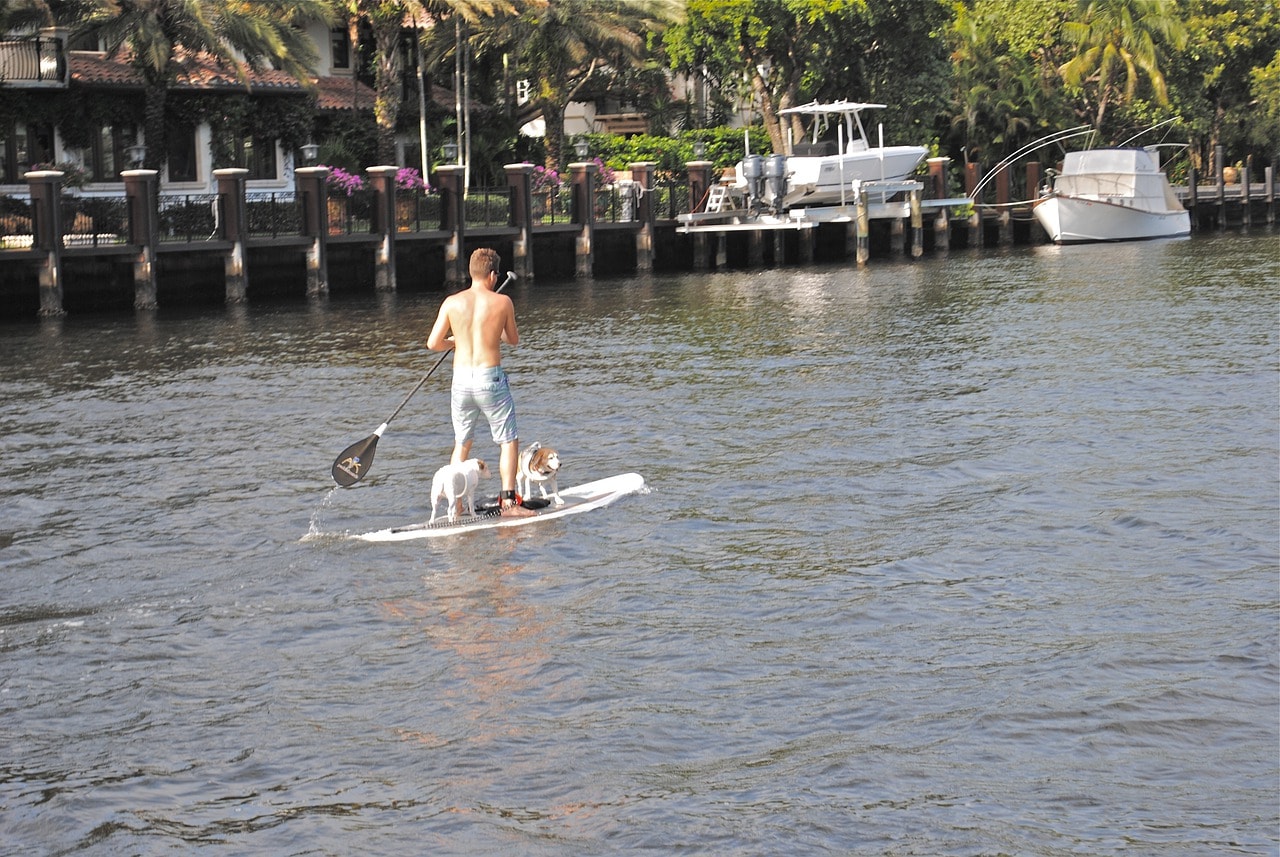
Next, you should make sure you have a kayak or canoe that can fit both you and your dog comfortably. Some canoes and kayaks are designed to carry an additional passenger or pet. The more room you have for your dog, the better. You also want to make sure that the kayak or canoe that you use is stable on the water, especially if you have a dog jumping in and out. It won’t do you or your dog any good if your boat flips when you are out on the water.
4. What to Bring
Before you try to hit the water, there are some things you need to gather to bring with you. These items are very important when you are out on the water with your dog. Your dog will need food and water, some safety items, and some entertainment to keep them occupied, watered, and safe.
- Snacks or treats
- A chew toy to entertain your dog while you are paddling
- A water bowl and plenty of fresh water
- Doggy sunscreen
- You and your dog’s PFD
- A towel
- A leash
- First aid kit (optional)
Getting a waterproof bag or backpack to keep these items for you and your dog might be a good idea. Keeping it packed and ready to go can also help make sure that you always have everything you need before you go out.
5. Safety Tips
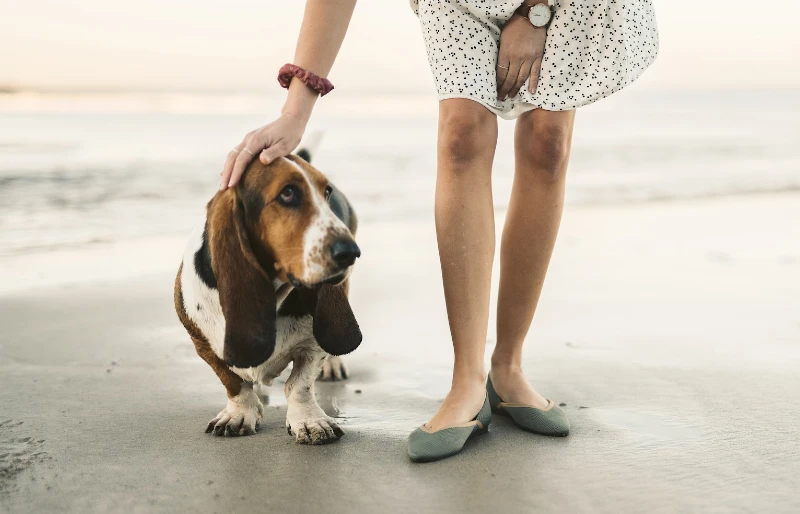
When you finally put your dog in the boat and hit the water, there are a number of things that you need to keep in mind to enhance the health and safety of both you and your dog.
- Be aware of wildlife. Wildlife can entice your dog to jump out of the boat, and some wildlife, such as snakes or alligators, can be dangerous to your dog.
- Make sure your dog doesn’t get too hot. Keep fresh water available. Stop and take breaks in the shade if necessary.
- Let your dog out onto land periodically to relieve themselves and stretch their legs so they don’t get uncomfortable or anxious.
- Keep an eye on the sky. Bad weather can be dangerous when you are on the water. This is especially true in the summer. Watch for approaching storms, high winds, rough waters, and more. If the weather gets too bad, make a plan to get off the water.
- Do not leash your dog when in the boat or on the water. A leash can get tangled or drag them down if they jump or fall out of the boat.
- If your dog jumps or falls out of the boat, immediately try to help them back in. Go to shallower water or to shore if necessary.
6. Respect Your Dog
Not all dogs like being on the water. Some dogs get scared, stressed, or anxious in certain situations. Keep an eye on your dog. If they are not having a good time, you might need to come in. If your dog never warms up to being on the water, you might need to stop bringing your dog along. You should not force your dog to go kayaking with you if they do not like it. Only bring your dog if they seem receptive and open to learning and having fun while boating.
Forcing your dog to be on the water when they don’t want to can be dangerous. An anxious dog can be more unpredictable. They might try to jump out of the boat constantly, or they might not listen to commands. Be sure to watch your dog and respect your dog to make sure they are a good fit for boating.
7. Practice and Work Up to Long Sessions
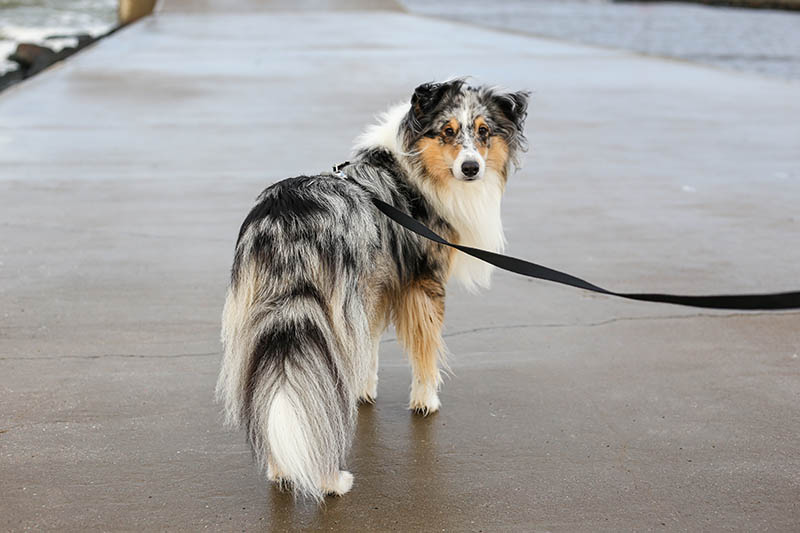
Practice makes perfect. You will likely not be able to hit the water for a multi-mile trip right off the bat. You should practice getting in and out of the boat on dry land. You should stay near shore for the first few trips to make sure your dog is behaving and understands the rules when on the water. You do not want to take your dog far out or on a long trip right away. You should slowly work up to longer trips so you have time to reinforce training, observe your dog, and get a feel for what it’s like out on the water.
Kayak vs. Canoe
The choice between a kayak and a canoe will primarily come down to personal preference. However, there are some differences that might make one more suitable for you and your dog than the other. Canoes are larger and heavier, but they are more spacious and more stable. Canoes might be better for larger dogs or inexperienced boaters who are not great at keeping balance in a kayak. Kayaks are smaller and lighter, but they are less stable and have less room for your dog. You might have to be more careful with your paddle while in a kayak so you do not hit your dog or accidentally tip over.
There are different types of kayaks that might be suitable for you and your dog, including sit-on-top kayaks, tandem kayaks, and fishing kayaks. Canoes can be outfitted with small electric motors, which can make it easier to get back with your dog after a long day. There are plenty of options for both, and you need to pick the boat that you feel most comfortable with.
Conclusion
These tips will help ensure that you have a fun and safe excursion with your dog. Many dogs will take to the water very well, especially if you reinforce some basic training and bring everything you need for a successful trip. Kayaking with your dog can be a great way to bond and spend the day. If you follow this guide, you are more likely to have a great day out on the water than if you try to wing it.
Featured Image Credit: everydoghasastory, Shutterstock


